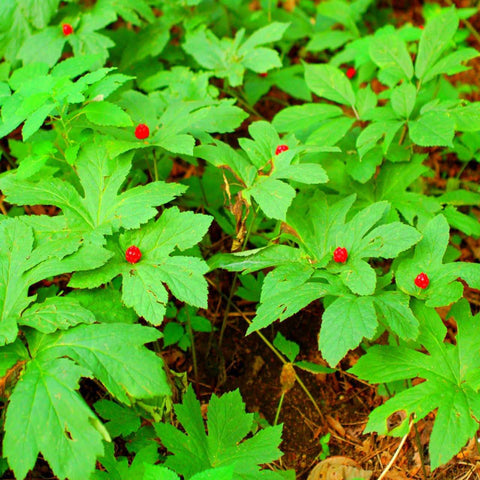

Goldenseal - Hydrastis canadensis
Goldenseal plant is a perennial woodland forb in the buttercup family, which can be found at higher altitudes in the eastern United States and Canada. It is often called a yellowroot, swamp root, or hid root. The plant grows from a shallow rhizome and is one of the few plants that can be successfully cultivated indoors or outside as an ornamental plant. The plant's white flowers bloom in clusters on thick stems, which are topped with golden-yellow flowers.
1. How to plant Goldenseal plant
The Goldenseal plant is a perennial, meaning it grows and produces new plants yearly. It will grow in soil, sand, or rocky areas (this type of plant prefers sunny locations and dry conditions). It is an evergreen growing in USDA Zones 3-7 and an arctic to alpine in USDA Zone 3. It prefers well-drained soils as it tends to be drought tolerant. It needs plenty of sunlight, especially the hot sun.
2. Goldenseal plant care
Goldenseal plant care includes watering during dry periods and removing dead growth. If the roots of this plant are exposed, they will grow new shoots that can persist for decades. The plant is considered invasive in some areas. Because of this, it is easy to find many nurseries and garden centers near populated areas.
3. Goldenseal plant for sale
Goldenseal plants can be available at local nurseries, garden centers, and grocery stores. The plants can be purchased while they are in bloom, or they can be purchased as dormant rhizomes with buds on them (these buds will grow into new shoots in the spring) in the fall. The rhizome-like plants are usually less expensive than those with flowers.
4. Goldenseal diseases and pests
Goldenseal plant is susceptible to many pests and diseases. These can include Varroa mites, slugs, snails, Japanese beetles, and aphids. Fungal pathogens can be a problem as well.
5. HOW TO PROPAGATE GOLDENSEAL PLANT
Propagating the goldenseal plant is relatively easy. The rhizome can be dug up and divided in early summer before the ground dries out. The cuttings can be planted as soon as they are firm and have 2-3 leaves. In most cases, the cuttings will root in 1-2 weeks. In cooler climates, they may only root the following spring.
6. WHERE THE GOLDENSEAL PLANT GROWS
Goldenseal plant grows in high-altitude regions in the eastern United States and Canada. It is often found in the Appalachian Mountains, but it can also be seen in the Adirondacks in northeastern New York. It grows from Maine to Ontario and south to Georgia and West Virginia.
7. Why should gardeners and homeowners consider planting Goldenseal plant
Goldenseal plant is a beautiful and exciting ornamental that can be quickly grown in gardens and houseplants. It does well in containers and with low water needs. The plant produces beautiful clusters of white flowers which attract hummingbirds and insects. The flowers are followed by sweet berries and a furry seed head that persists into winter.
8. Goldenseal plant as a houseplant
Goldenseal plants can be grown as a houseplant in any area than gets 4-6 hours of sunlight per day. When it grows as a houseplant, the potting media should be fast-draining. The plant prefers slightly acidic soil, but it will tolerate alkaline soils. It needs to be watered when the top of the ground feels dry.
Buy Goldenseal online at Nance Plants.
FAQ
1. Can you grow your own Goldenseal plants?
A. Yes, you can grow your own goldenseal (Hydrastis canadensis).
2. How fast does Goldenseal grow?
A. Goldenseal (Hydrastis canadensis) is a slow-growing perennial herb.
Goldenseal plant is a good choice for people who want to attract wildlife to their gardens, but it is also ornamental enough to be an attraction in the park. It is easy to grow and care for, but it will require occasional trimming or dividing if left untended. The plant is beautiful in many parts of the country.
One Year Guarantee on all Perennials & Ferns. See Healthy Plant Guarantee for more details.
Color:
White, Green
Ships As:
Root/Rhizome
Season:
Spring, Summer, Fall
Zone:
3-9
Exposure:
Partial-Full Shade
Deer Resistant:
No
Native:
Yes
I got 3 out of 5 to grow. Good odds




